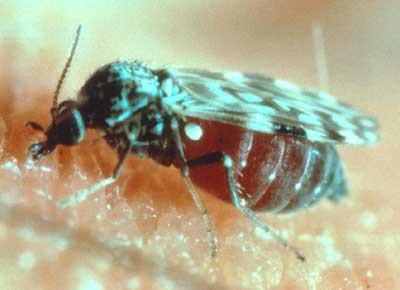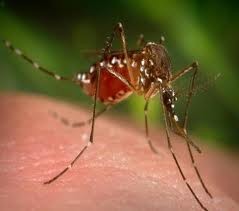Midges are tiny two-winged biting insects, particularly abundant in wetter parts of the UK.
 Midges are actually a species of gnat (genus= Culicoides), that fly in swarms and are usually found near their breeding grounds. Only the females feed on blood (they need protein to produce eggs). The males feed on nectar. Midges fly more slowly than walking humans, and they don't like direct sun, very dry air (low humidity) or wind.
Midges are actually a species of gnat (genus= Culicoides), that fly in swarms and are usually found near their breeding grounds. Only the females feed on blood (they need protein to produce eggs). The males feed on nectar. Midges fly more slowly than walking humans, and they don't like direct sun, very dry air (low humidity) or wind.
At least 37 species of midge have been recorded in Scotland. The overwhelming majority of the bites to people in western Scotland come from the Highland midge (latin name Culicoides impunctatus), which has a particularly fearsome reputation.
Mosquitoes are related to midges (same taxonomic order, Diptera), but different taxonomic families (Culicidae for mozzies, and Ceratopogonidae for midges).
 Like midges, male mosquitoes feed on nectar and only the females bite. But mozzies stray further from their breeding grounds, can fly faster than midges, and don't almost always feed in swarms.
Like midges, male mosquitoes feed on nectar and only the females bite. But mozzies stray further from their breeding grounds, can fly faster than midges, and don't almost always feed in swarms.

At least 37 species of midge have been recorded in Scotland. The overwhelming majority of the bites to people in western Scotland come from the Highland midge (latin name Culicoides impunctatus), which has a particularly fearsome reputation.
Mosquitoes are related to midges (same taxonomic order, Diptera), but different taxonomic families (Culicidae for mozzies, and Ceratopogonidae for midges).
